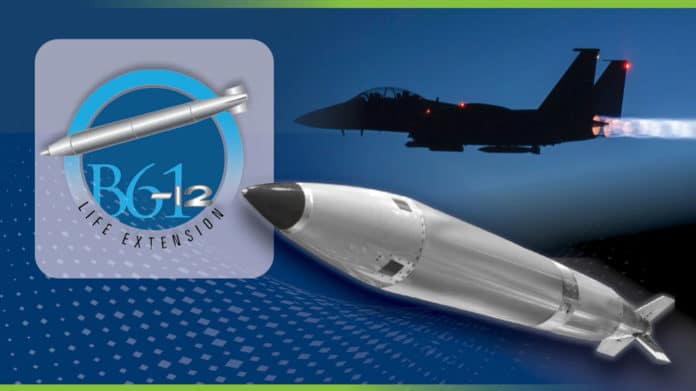America’s newest air-dropped nuclear weapon variant has entered production. The U.S. Department of Energy’s National Nuclear Security Administration (NNSA) announced that on November 23, it had successfully completed the first production units of the B61-12 Life Extension Program (LEP), an updated version of the warhead used on weapons dropped from fighters and bombers. This paves the way to create an estimated 480 of the weapons, which will homogenize four existing variants of the bomb.
The B61-12 LEP helps modernize America’s nuclear weapons stockpile and sustain the Nation’s air-delivered nuclear deterrent capability. The nuclear security enterprise and the U.S. Air Force worked together to deliver the B61-12 FPU after more than nine years of design, development, qualification, and component production.
Deployed from U.S. Air Force and North Atlantic Treaty Organization (NATO) bases, the B61 nuclear gravity bomb has been in service for over 50 years. Since the first B61 entered services in 1968, many modifications have been made to improve the B61’s safety, security, and reliability. Currently, there are four B61 variants remain in the stockpile: the 3, 4, 7, and 11. The B61-12 will replace the B61-3, 4, and 7.
The B61-12 LEP refurbishes, reuses, or replaces all of the bomb’s nuclear or non-nuclear components to extend the service life by at least 20 years. The updated variant will not only be carried by heavy bombers like the B-52 and the B-2 but also a wide variety of fighter aircrafts flown by the U.S. Air Force and NATO countries.
The B61 LEP will also continue to assure the weapon’s safety, security, and effectiveness. NNSA anticipates starting full-scale production in May 2022 and completing all needed production in 2026 at the cost of US$28 million each.
“With this program, we’re delivering a system to the Department of Defense that improves accuracy and reduces yield with no change in military characteristics, while also improving safety, security, and reliability,” said Jill Hruby, DOE Under Secretary for Nuclear Security and NNSA Administrator. “The work on the B61-12 will also ensure the warhead can be air-delivered on both current and future platforms to meet Department of Defense requirements.”
